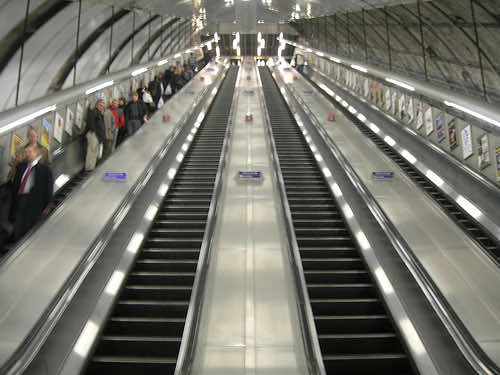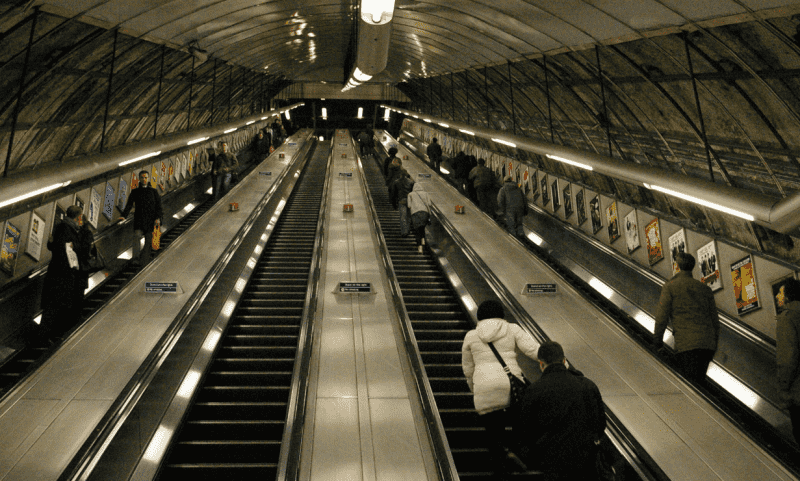It is the normal convention of escalators that people preferring to stand are on one side and people who are in a hurry and need to walk their way up or down, have the other half of the path. But, in a sudden shift in policy, London’s Underground management has imposed a new rule; People mustn’t walk on escalators and remain standing in their place. The admin believes that this actually makes the elevators run efficiently? But on what basis do they have this supposition?
Recently they released the logic behind the rule change in their website. It didn’t really make sense to many but had to have something on them to enforce this rule. The London Underground is seeing a record number of passengers, and many of the busiest stations are overwhelmed with a sea of bodies during rush hours. Since the slow-lane fast-lane convention of the escalators meant that bottlenecks were created on escalators on one side. So, you would think the congestion would force the fast-lane people to be slow and be more or less like everybody else. But, that’s not completely the case.

The study shows how it all comes down to two factors; the number of stairs passengers need to climb and how many people trying to attempt it. If too many people attempt to walk up long escalators, it makes congestion even worse than ever. Take for example the Holborn station of London and its 77-foot long escalator. A 2002 study on this escalator found out that the escalator when using the common convention reduces the capacity of the escalator by half and creates crowds of people waiting at the start. Also, since people like to have a certain amount of personal space in public spaces, the fast-lane creates, even more, problems for them as people keep zooming past them and often bumping into each other as well.

Additional data modeling on the number of passengers also proved the theory correct. If everyone is traveling at the standard pace of the escalator, 31 more people were able to reach the top every minute. Although we agree most of it, it isn’t just logical to implement it except on rush hours. Even though the study conducted was the first-ever, the idea of this rule came from Japan and Hong Kong. In the latter, problems had arisen in the escalators when too many people attempted to walk up or down the moving stairs. So, for three weeks, the London Underground staff will ask the passengers to stand and not walk in Holborn Station escalator. If it becomes successful, the rule might be implemented permanently. A holographic customer service operator will remind people to stand on both sides and don’t walk past each other as well.
It will be interesting to see how it is introduced in the USA and other countries. People might not be THAT enthusiastic about the whole ordeal!


